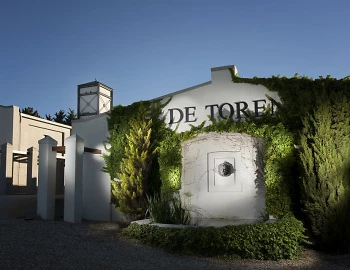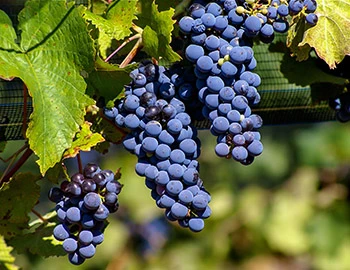
Book XVII 2018
Stellenbosch, De Toren, 750 ml

| Grape variety: | Cabernet Sauvignon, Malbec, Cabernet Franc |
| Producer: | De Toren |
| Origin: | South Africa / Coastal Region / Stellenbosch |
| Other vintages: |
Description
Book XVII captivates us with its full, wide-ranging bouquet of dried figs, crème de cassis, plums, delicate cardamom, vanilla and aniseed spice, complemented by floral components of magnolia and lilac. Full-bodied, balanced with a finely interwoven fruit and tannin structure. Precise, but at the same time, silky and elegant. A grand wine with an irresistible charm. For optimal enjoyment, we recommend decanting this wine.
Attributes
| Origin: | South Africa / Coastal Region / Stellenbosch |
| Grape variety: | Cabernet Sauvignon, Malbec, Cabernet Franc |
| Drinking temperature: | 15 to 18 °C |
| Food Pairing: | Saddle of lamb fillet with herb jus, Wild specialities, Bistecca fiorentina, T-Bone steak |
| Volume: | 14.5 % |
| Note: | Contains sulphites |
De Toren
De Toren is one of the first wineries in South Africa to producing classic Bordeaux-style wines. Since its foundation, the De Toren vision has been and remains the reinterpretation of the Bordeaux concept and to create unique South African wines from the five grape varieties Cabernet Sauvignon, Merlot, Cabernet Franc, Malbec and Petit Verdot. De Toren is one of the first wineries in South Africa to producing classic Bordeaux-style wines. Since its foundation, the De Toren vision has been and remains the reinterpretation of the Bordeaux concept and to create unique South African wines from the five grape varieties Cabernet Sauvignon, Merlot, Cabernet Franc, Malbec and Petit Verdot.
This acclaimed winery is located at the highest point of the Polkadraai Road in the Polkadraai Hills, boasting a view over False Bay and onward to the Atlantic Ocean.

Malbec
New Home, New Fortune
The Malbec once belonged to the classic assortment of varieties from Bordeaux. But it was demanding to cultivate, and in the changeable climate of the Bordelais it often became green and herbaceous, so winemakers replaced it with Merlot in the middle of the 20th century. Luckily, the Malbec found a new home in Argentina. In 1868, a Frenchman brought the first stocks along to the land of the Andes. Today, the Malbec is the most-planted variety there. Especially in Mendoza, it shows what it can do: it yields very dark, well-structured wines with aromas of black fruit, violets and game. They just call out for an Argentinean steak! The Malbec has its origins in Cahors, in southwestern France. There, it is kept today under the name Cot. Due to their earthy tannins, in the middle ages the growths from this area were also called "the black wines of Cahors".


